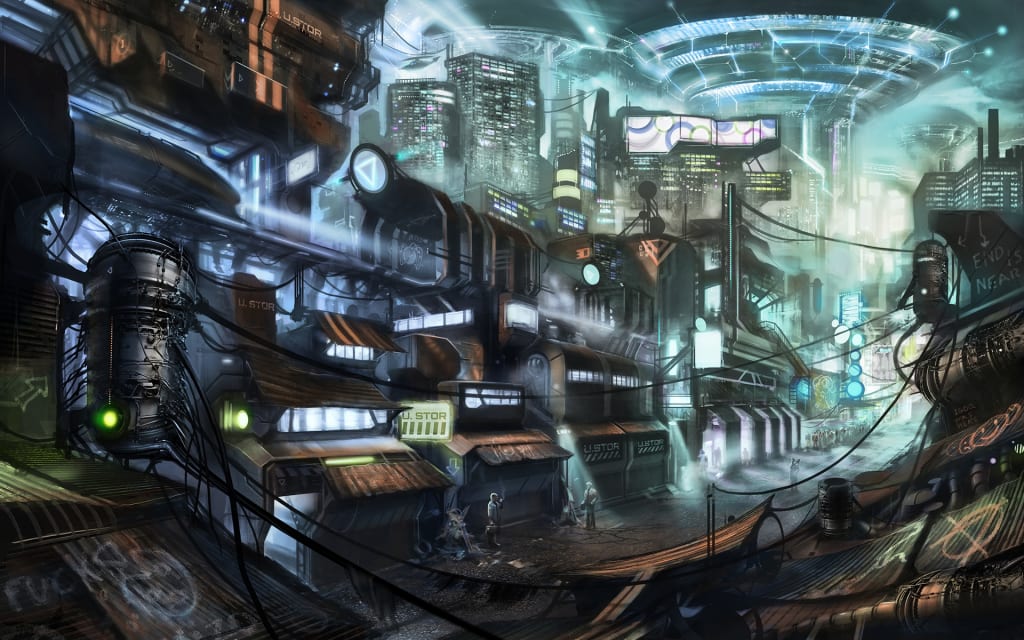
Exploring the Metaverse in Neal Stephenson’s “Snow Crash”
Introduction: Unraveling the Digital Frontier
In Neal Stephenson’s groundbreaking novel “Snow Crash,” readers are thrust into a futuristic world where virtual reality intertwines with real-life consequences. Set in a dystopian future, the novel explores themes of technology, language, and society, offering a gripping narrative that challenges our perceptions of reality.
Navigating the Metaverse: A Digital Playground
Central to the storyline is the concept of the Metaverse, a vast virtual reality space where users can interact, socialize, and conduct business. Within the Metaverse, individuals are represented by avatars, allowing them to explore digital landscapes and engage with other users in real-time. This immersive virtual environment serves as the backdrop for much of the novel’s action, offering readers a glimpse into a possible future where virtual worlds blur the lines between fiction and reality.
Hiro Protagonist: A Cyberpunk Hero’s Journey
At the heart of “Snow Crash” is Hiro Protagonist, a freelance hacker and sword-wielding warrior who navigates the digital landscape with skill and precision. As the novel unfolds, readers follow Hiro on a perilous journey through the Metaverse and the real world, as he races against time to uncover a deadly conspiracy that threatens to unravel the fabric of society itself. With his quick wit and unyielding determination, Hiro embodies the quintessential cyberpunk hero, navigating the complexities of the digital frontier with ease.
Virtual Realities and Real-Life Consequences
One of the most compelling aspects of “Snow Crash” is its exploration of the consequences of virtual reality technology on real-world society. As users immerse themselves in the Metaverse, they are confronted with questions of identity, agency, and the nature of reality itself. Stephenson deftly examines how the lines between the digital and physical worlds blur, raising important ethical and philosophical questions about the impact of technology on human civilization.
Linguistic Virus: Hacking the Mind
In addition to its exploration of virtual reality, “Snow Crash” also delves into the power of language and communication in shaping the world around us. Central to the plot is the concept of the Snow Crash virus, a linguistic virus that infects users’ minds within the Metaverse, rendering them helpless and susceptible to manipulation. Through this narrative device, Stephenson highlights the potential dangers of language as a tool of control and coercion, offering a cautionary tale about the power of words to shape our perceptions and realities.
Virtual Cults and Corporate Hegemony
Another central theme in “Snow Crash” is the rise of virtual cults and corporate hegemony within the Metaverse. As large corporations and religious organizations vie for control over virtual territory, readers are drawn into a world of political intrigue and power struggles. Stephenson’s portrayal of this dystopian society serves as a stark warning about the dangers of unchecked corporate power and the erosion of individual freedoms in an increasingly digitized world.
Conclusion: A Vision of the Future
In “Snow Crash,” Neal Stephenson presents readers with a vision of the future that is both exhilarating and terrifying. Through its exploration of virtual reality, language, and society, the novel challenges us to rethink our assumptions about technology and its impact on humanity. As we continue to navigate the complexities of the digital age, “Snow Crash” serves as a timely reminder of the power of storytelling to illuminate the possibilities and pitfalls of our technological advancements. Read more about metaverse snow crash
